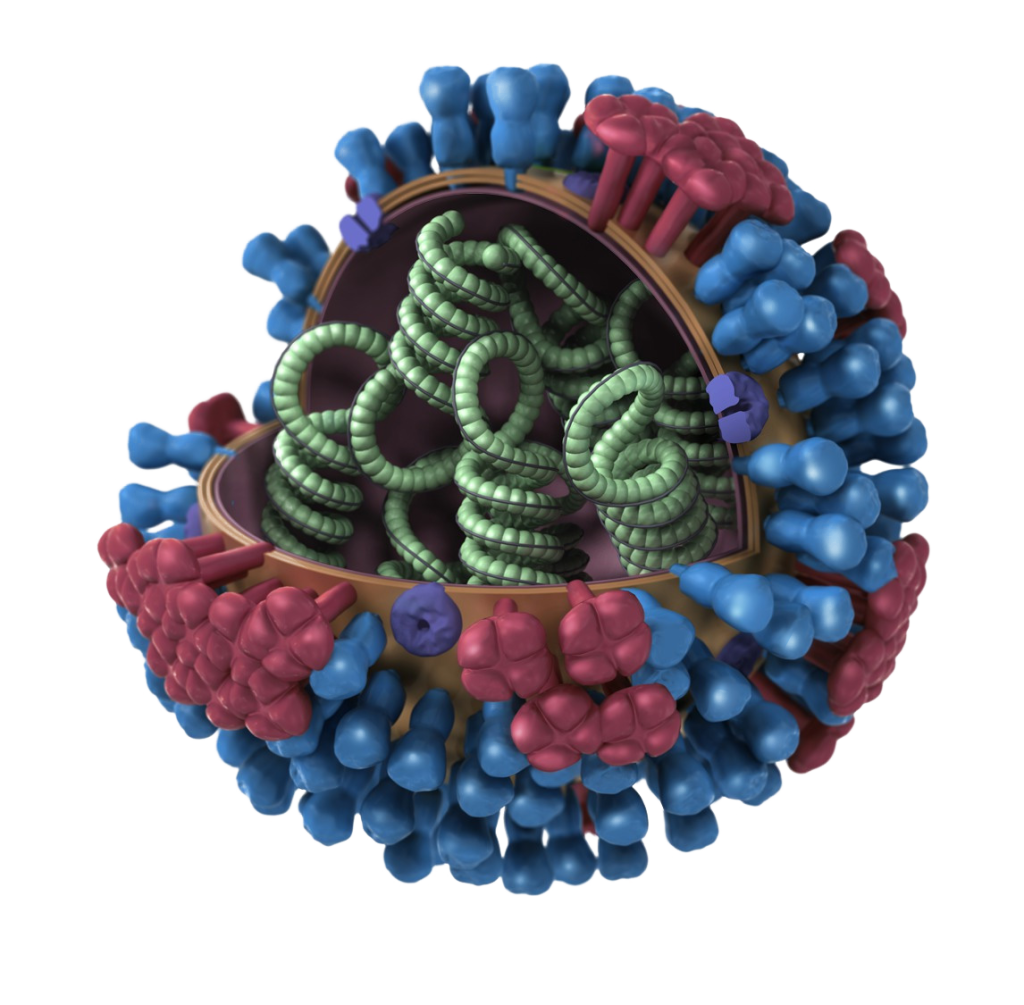
“Influenza” comes from the Latin for “visitation”, in days when no one had any idea about microscopic life and it was assumed that astrological or weather conditions were behind the illness. In my more enlightened time I attended many deaths due to visitations from influenza, an experience which seems far less common after vaccination became routine for those at risk.
So influenza viruses are our companion, our cohabitees in the modern world of dense human, pig and chicken populations coupled with its wars and a hefty doses of political ignorance and impotence. The 1918 H5N1 pandemic killed up to 100 million people, most of them young and previously healthy and serves as an eternal warning of how delicate our physiology is to these packages of genetic information when we have not been previously exposed.

I for one can clearly remember the misery of flu. The fever, inability to move, chills, sore skin and muscles and the cough.
While our most recent human pandemic is settling into the background in our media and in our minds, another is spreading devastation around the globe, H5N1 influenza A. Termed avian or bird flu after its host, it has caused the death of millions of wild birds as well as domestic chickens. For many suffering wild bird colonies and biodiversity it has already been a disaster. It is on all our doorsteps with harm to birds not far from me, and probably you. So what now for the future, and how worried should we be?
What is H5N1?
The letters refers to key viral proteins. H=haemagluttinin, a protein which, broadly speaking lets the virus into our cells, and N = neuraminidase helps the newly formed viruses to emerge from the cells they infect. Influenza comes in four species, A,B,C and D, with A being the one affecting humans.
H5N1 is a relatively new strain, first detected in Scottish chickens in 1959 and then in Chinese geese in 1996, popping up here and there ever since. It rarely transmits to humans, though when it does it kills in between a third and half of those infected. Thankfully, transmission from human to human has not been documented. Fingers crossed it never will be.
What’s different now?
- Bird species usually immune to H5N1 are being infected and killed, including raptors, vultures and many already endangered species.
- Its spreading at times of the year it is usually dormant This strain or clade as these clans are called, has spread globally during the summer with the US and South America hardest hit killing 55,000 wild birds and 600 sea lions in Peru alone..
- As well as the sea lions, it has spread to other mammals, now also infecting farmed mink in Spain and now foxes and otters in the UK. Dead dolphins have been found with H5N1 in the UK. This is also concern as it has now jumped to animals far closer to humans and who may be forming a potential natural reservoir.
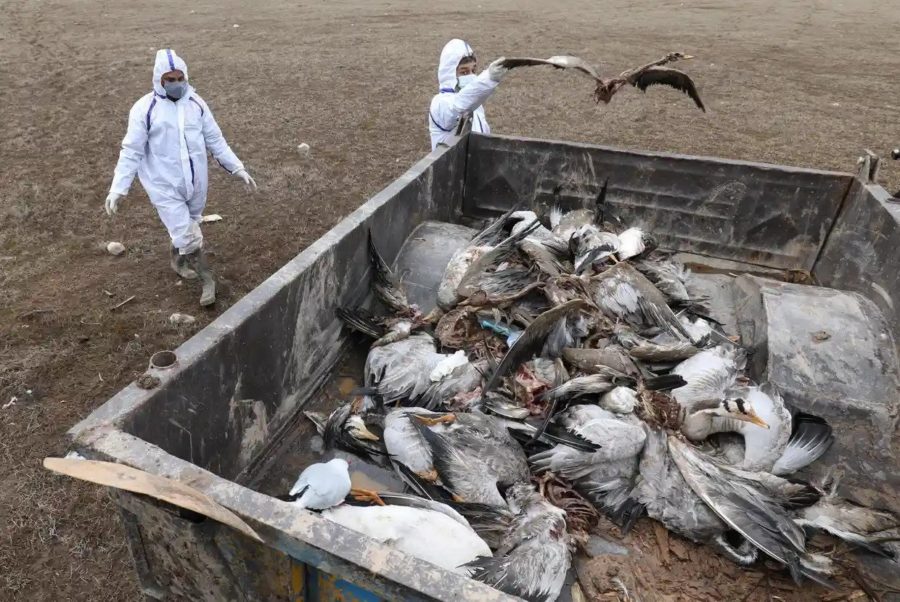
Avian flu has devastated wildlife giving us three major pandemics in the last few years, Ash Die back affecting trees, Sars Cov2, and now avian flu affecting birds and mammals.
When it does affect humans, onward transmission does not take place – if it did, the world would be a very different place. So far in the outbreak, 7 humans have been infected, four with no symptoms, three with severe disease and one death.
What is the risk?
Risk is classified as follows:
Level 1 – Avian influenza circulating in birds with altered epidemiological dynamics and/or increased prevalence
Level 2 – Level 1 plus detection of spillover into mammals.
Level 3 – Evidence of viral genomic changes that provide an advantage for mammalian infection
Level 4 -Sustained transmission in non-human mammalian species or any human detection and mutations in haemagglutinin (HA) which allow transmission.
Level 5 – Any human-to-human transmission
So right now we are at level 3.
So this isn’t the “big one”?
For wildlife it is pretty devastating, but for humans, not so far – WHO and CDC experts rate the current risk as low, but the future is unpredictable. Once again, intensive poultry and pig rearing are ideal melting pots for viruses to mix, evolve, leak into the outside world, infect wild animals and spread around the world. So, we humans have got away with it this time, but our fellow inhabitants have not. The dangerous bird flu strains getting together with lesser troubling but far more transmissible swine flu strains to produce a deadly and transmissible strain is not only far from impossible, but some would argue, inevitable.
Treatments
For those who have access to health care systems, anti-virals have a big role and those working in the poultry industry must be alert to symptoms. Early treatment is vital and so anyone working with infected birds or in contact with dead wildlife who develops symptoms should get early treatment with antivirals.
Vaccines
Although it is not possible to create the exact vaccine needed for the H5N1 strain until it evolves, much groundwork has been done. Jeremy Farrar, the incoming Chief scientific Officer at the WHO spent 18 years in Vietnam studying viral outbreaks. He feels the time for stockpiling what H5N1 vaccines we have and starting phase 1 and 2 trials to ensure safety and that they can stimulate an immune response is now. It may be a very small, even tiny risk, but the consequences would be unthinkable.
We already produce annual vaccines on the basic of circulating influenza strains and while some might complain about their variable effectiveness, they are hugely useful both to those at risk and to keep our struggling hospital from overload. The mRNA technologies could speed up the process and be far more vital than even for Sars-Cov2 if that evolution to human transmissibility does take place.
What is being done?
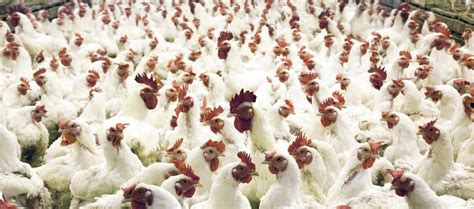
In the UK steps are in place for more intense surveillance of those working in the poultry industry – and culling affected flocks.
140 million birds have been culled up to the new year, representing 0.5% of domestic chickens globally. Incredibly, in 2021 there were some 25.8 billion chickens in the world – four for every human being on the planet – up from about 13.9 billion in 2000. Once detected, the immediate destruction of the flock will prevent onward spread as well as reducing the interface between domestic and wild birds. It’s like continual surveillance for half open open stable doors.
Once there is an outbreak, birds within a 10km radius have to be kept indoors, apart from that is, the notorious pheasant…
Pheasants – the elephant in the room
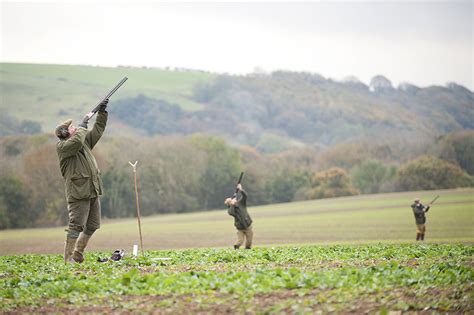
On now for a hefty dose of corrupt politics. Every year about 55 million pheasants and 3 million mallards are released outdoors so they can be shot. Incredibly, birds bred for this hideous sport account for about half the avian biomass in the UK!
Pheasants get avian flu and are share it with wild birds and mammals who come to their feeders and eat dead birds. The restrictions for chickens seem not to apply so strictly to pheasants who have become no more that a living target for people who like to spend time blasting the creatures to oblivion. (Anyone with a better definition of casual sadism?) There is a powerful, well connected and well funded lobby from those supporting the industry which has usurped the golf course as a location for the rich to meet, do business and network.
The RSPB are clear on the danger from pheasants: “If they were to transfer bird flu into terrestrial bird populations, into woodland birds, into farmland birds – it would take something that is already a crisis for our sea birds and turn it into a full-blown catastrophe for our wild bird populations across the country,”
Yet there are currently no restrictions on releases for shooting. The hapless UK government reserves the right to impose restrictions on a wide range of activities (shooting included) “if it deems the outbreak poses a threat to human health”. Typical of UK pandemic management, that would be far too little far too late. If that ever happens, we will need vaccines and fast!
KFC anyone?
Our love for chicken meat is now a serious problem with much of the processed stuff not only providing poor nutrition and cruel conditions for birds, but now causing these grim problems with the biosphere. Is this a circle that cannot be squared?
We seem stuck with chickens as a major source of meat, most from huge intensive units which can never be biosecure, or in free range systems which also have their problems, polluting the life out of the previously glorious river Wye for example and interacting more readily with wild birds. There are few moves to reduce this vast over-production of chickens.

Fast food with all its external costs of infections, new viral strains, pollution, cruelty and impact on health of low quality chicken fried in overheated vegetable oils – a recipe for disaster.
Perhaps the only way out of this morass is artificial meat, vegetarianism, or buying chicken from smaller units which will not be such melting pots for viral evolution.
Eating less, higher quality meat is a biological imperative, tricky of course on those who are in struggling financially – about 50% of the UK population. Taxes on meat which include the external costs of its production would end intensive production as those costs are staggeringly high.
Mink coat anyone??
Even a simple measure like ending farming mink would be a positive thing for everyone apart from those who would lose livelihoods. Mink farming is a unmitigated, needless environmental disaster, already proving a problem with SarsCov-2 evolution, and releases into the wild to create problems for wildlife.
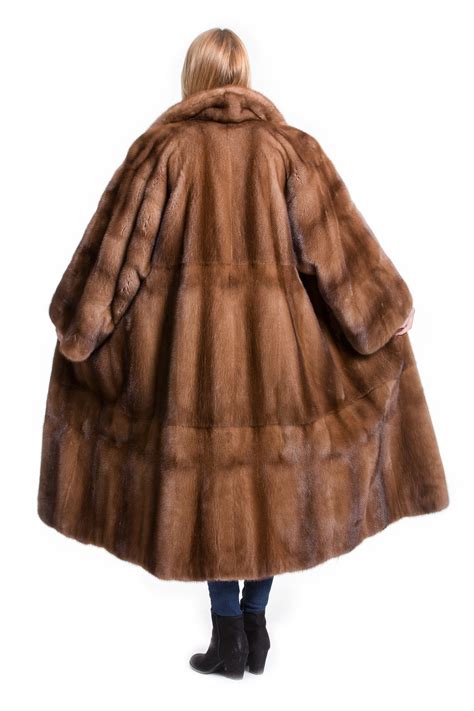
Vanity – an expensive business for dumb animals!
Inevitable viral conspiracies
What can reasonably be called anti-science, so tragically expanded by unfiltered social media and those seeking fame and fortune will of course see the whole thing as a career boosting fallacy for virologists, public health professionals and those seeking to control human behaviour.

A common but ineffective way to manage the risk of H5N1.
As with Sars-Cov-2 the emergence of a serious human threat will be met by avalanches of misinformation about how its been made by humans (in a way it has been), how its lining up for yet more vaccines (I certainly hope so) and, as usual, claims that its all about making people scared when we should be all free to do exactly what we want, whenever we want to do it, whatever the consequences – that modern mendacious mythology of freedom from responsibility so evident over the last few years.
I’n not scared at all, but that is not to say that pretty frightening scenarios need planning for.
Thanks for reading this post – any comments or feedback with be gratefully received and responded to as soon as I can.
I’d not linked breading and release of pheasants etc to the avian flu and having to keep chickens indoors! Very thought provoking ! Rich Bar-stewards getting their own way again!
Thanks Sue, Yes indeed, pheasants seem everywhere lately.